All About Eggs - How to Cook with Eggs
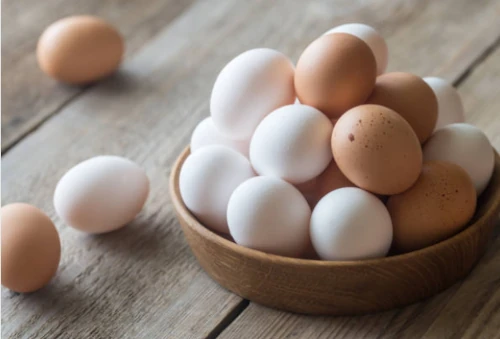
Eggs are highly nutritious, versatile, and essential ingredients for a myriad of baking techniques. As one of the few foundational components of many bread, roll, and cake recipes, even the most casual baker will benefit from learning a thing or two about the simple but powerful egg.
Traditionally associated with springtime as a symbol of birth and the renewal of life, eggs are often served devilled or boiled and dyed for Easter. But there are countless ways to use eggs in cooking at any time of the year. In fact, people have been eating eggs for millions of years. They are one of our ancient sources of protein, fueling the evolution of the early human brain. Eggs are portable and come in their own protective container – ideal for an easy snack on the go.

Baking with Eggs
These adaptable ovoids, having sustained populations for eons, are of great importance to the home baker or comfort food connoisseur. Eggs are not only a delicious dish on their own, but become a vital ingredient when used to bake. Let’s consider some of the reasons why:
- 1. Eggs are a binder, helping bring ingredients together and giving structure and shape to baked goods
- 2. Eggs act as a leavening agent. The water content of the egg evaporates as steam, giving rise to breads and cakes.
- 3. Eggs help to improve the texture of baked goods. They add moistness and promote a tender crumb.
Tips for Beating Eggs
Beating eggs with an electronic egg-beater can be a quick and simple solution that works well in most cases. But Granny never bothered with such nonsense – she beat eggs by hand.
In the world of baking, the art of beating eggs by hand is a skill that harks back to simpler times. It's a technique that Granny would have used, and it's one that can bring a touch of authenticity and precision to your baking. Here's how to do it the old-fashioned way:
- Choose the Right Tools: Granny didn't have the luxury of an electric mixer, and she didn't need one. Instead, she would have used a wooden whisk and a shallow, flat-bottomed earthen pan. The reason for this is that metal utensils can affect the temperature of the eggs, and a shallow pan allows for better movement and control when beating.
- The Technique: When it comes to beating eggs by hand, technique is everything. Keep your elbow tucked in at your side and move your hand at the wrist in a quick, short, and horizontal motion. This method is efficient and reduces fatigue.
- Beat Until Smooth: Once the eggs start to foam, don't stop! Continue beating until they transform from a frothy consistency to a smooth and creamy one. This is when the eggs are truly light and ready to be used in your recipe.
- Understand the Science: Beating eggs incorporates air into the mixture, which can help to make your baked goods light and fluffy. The more air that's incorporated, the lighter your cakes or pastries will be.
- Practice Makes Perfect: Beating eggs by hand may take a bit of practice to get right, but once you've mastered the technique, you'll have a new skill that can take your baking to the next level.
The Art of Beating Eggs in Traditional Baking

To really understand the cooking techniques of yesteryear, it helps to go to the source and channel Granny. The pioneer women of the past ages used simpler utensils than what we are used to today. It’s this simplicity that brings recipes back to their roots. One of the earliest American cookbooks, The Lady's Receipt Book: A Useful Companion For Large Or Small Families from 1847, is a window to our ancestral cooking tradition. It includes the following guidance on how to beat eggs:
TO BEAT EGGS: In making cakes it is of the utmost importance that the eggs should be properly and sufficiently beaten; otherwise the cakes will most certainly be deficient in the peculiar lightness characterizing those that are made by good confectioners. Home-made cakes, if good in other respects, are too frequently (even when not absolutely heavy or streaked) hard, solid and tough. This often proceeds from too large a portion of flour, and too small an allowance of butter and eggs. The richest cake that can be made (provided it is light and well baked) is less unwholesome than what are called plain cakes, if they are solid or leathery. Cakes cannot be crisp and light without a due proportion of the articles that are to make them so; and even then, the ingredients must be thoroughly stirred or beaten; and of course thoroughly baked afterwards.
Persons who do not know the right way, complain much of the fatigue of beating eggs, and therefore leave off too soon. There will be no fatigue, if they are beaten with the proper stroke, and with wooden rods, and in a shallow, flat-bottomed earthen pan. The coldness of a tin pan retards the lightness of the eggs. For the same reason do not use a metal egg-beater. In beating them do not move your elbow, but keep it close to your side. Move only your hand at the wrist, and let the stroke be quick, short, and horizontal ; putting the egg-beater always down to the bottom of the pan, which should therefore be shallow. Do not leave off as soon as you have got the eggs into a foam; they are then only beginning to be light. But persist till after the foaming has ceased, and the bubbles have all disappeared. Continue till the surface is smooth as a mirror, and the beaten egg as thick as a rich boiled custard; for till then it will not be really light. It is seldom necessary to beat the whites and yolks separately, if they are afterwards to be put together.

White or Brown Eggs: Which is the Better Choice for Baking?
When it comes to baking, the choice between white and brown eggs can often leave bakers scratching their heads. Is there a difference? If so, which one is better for baking? Let's delve into the world of eggs and uncover the truth.
The color of an egg is determined by the breed of the chicken. Chickens with brown or red feathers typically lay brown eggs, while those with white feathers lay white eggs. However, the color of the eggshell has no impact on the nutritional value, quality, or taste of the egg. Both white and brown eggs offer the same nutritional benefits, including high-quality protein, essential vitamins, and minerals.
In terms of baking, both white and brown eggs perform similarly. They both act as binders, provide moisture, and contribute to the leavening process. Therefore, the choice between white and brown eggs for baking largely comes down to personal preference or availability.
One common misconception is that brown eggs are healthier than white eggs. This is not the case. The nutritional profile of an egg is influenced more by the hen's diet than the color of its shell. Hens that are allowed to roam freely and eat a natural diet tend to lay eggs with richer, more flavorful yolks, regardless of whether the eggs are white or brown.
So, why are brown eggs often more expensive than white eggs? The answer lies in the size of the hens. Breeds that lay brown eggs are often larger and require more feed. This additional cost is typically passed on to the consumer, making brown eggs slightly more expensive.
In conclusion, whether you choose white or brown eggs for your baking needs, you can expect similar results. The most important factor is freshness. Fresh eggs will give you the best results in terms of taste and texture. So, the next time you're ready to bake, remember that the color of the egg is less important than its freshness.

Egg Nutrition Facts
Eggs, affordable and versatile, are the building blocks of a balanced diet, providing essential vitamins and minerals. And they are packed with high quality protein, serving up over 6 grams each. There are differences in the nutrition profile of the yolk and the white, instantly doubling the range of culinary possibilities. But the nutritional value can vary depending on the type of egg and the diet of the hen that laid it.
When we think of eggs, the first image that comes to mind is often the humble chicken egg. However, the world of bird eggs is incredibly diverse, with each species offering unique characteristics. Whether it's the tiny speckled egg of a quail or the large, richly colored egg of an emu, each bird egg has its own story to tell. In this section, we will compare eggs from different birds, shedding light on their unique features and their roles in baking and cooking.
The Common Chicken Egg
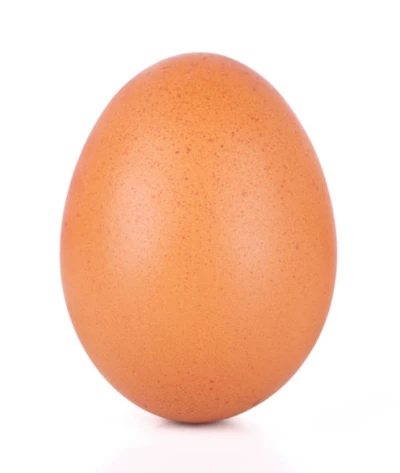
Chicken eggs, the most common type of egg consumed worldwide. They are versatile, nutritious, readily available, and a nutritional powerhouse. Chicken eggs provide essential nutrients like vitamins A, B2, B5, B6, B12, D, E, and K, as well as folate, phosphorous, selenium, calcium, and zinc. A large chicken egg contains approximately 6 grams of protein and 5 grams of healthy fats. The nutritional value is divided between the egg white and the yolk, with the white containing more than half the egg's total protein, while the yolk contains all of the fat in the egg and some essential vitamins and minerals.

Exploring the Nutritional Facts and Healthiness of Other Eggs
Ever thought about venturing beyond the realm of the humble chicken egg? Well, darling, you're in for a treat! There's a whole universe of other eggs out there, each with its own unique nutritional makeup and health perks. From the decadently delicious duck eggs to the petite powerhouse that is the quail egg, and the gargantuan ostrich eggs, we're about to take a deep dive into the nutritional facts and health benefits of these diverse darlings. So, buckle up, buttercup, and join us on this exciting culinary journey!
Duck Eggs

Duck eggs, while not as commonly consumed as chicken eggs, are steadily gaining popularity among food enthusiasts, chefs, and bakers. Known for their richer taste, duck eggs offer a depth of flavor that surpasses that of chicken eggs, adding a unique touch to a variety of dishes. Their thicker shell not only provides a natural protective barrier that allows for longer freshness, but also gives them a distinctive appearance that sets them apart.
One of the standout features of duck eggs is their larger yolks. These yolks are rich in healthy fats, cholesterol, and protein, making duck eggs a nutrient-dense food choice. They are also a good source of vitamins B, D, and E, contributing to overall health and wellbeing. The larger yolk and higher fat content of duck eggs make them particularly valuable in baking. They enhance the moisture and richness in a recipe, resulting in baked goods that are more flavorful and have a better texture.
Goose Eggs
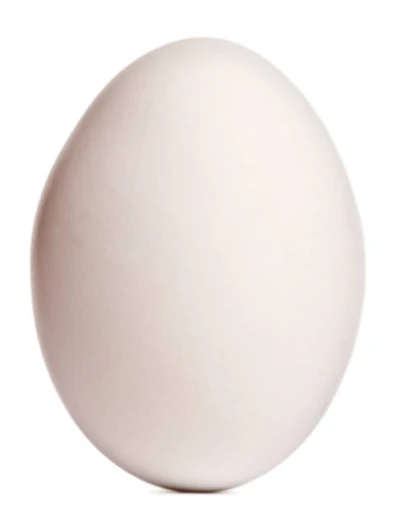
Goose eggs, though less common than chicken or duck eggs, offer unique culinary and nutritional benefits. Their larger size, equivalent to two to three chicken eggs, provides a richer flavor and makes them a standout ingredient in any dish. They are particularly favored in baking due to their higher yolk-to-white ratio, which imparts a distinct richness and moisture to cakes and pies.
What's more, goose eggs have a higher protein content, making them an excellent choice for those seeking to boost their protein intake. They also contain essential vitamins and minerals, including Vitamin B12, Vitamin A, and iron, contributing to overall health and wellbeing. Despite their less common availability, the unique nutritional profile and culinary versatility of goose eggs make them a worthwhile addition to your diet.
Turkey Eggs
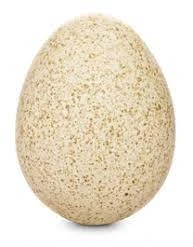
Turkey eggs, with their thicker yolk and egg white, offer a distinctive creamier texture compared to other eggs. However, they are not readily available in stores, making them a rare and sought-after treat. Despite their scarcity, the unique texture and flavor they impart to dishes make them a valuable addition to any culinary endeavor. Whether used in savory recipes or incorporated into delightful desserts, the creaminess of turkey eggs elevates the overall dining experience. So, if you ever come across the opportunity to enjoy the creaminess of turkey eggs, seize the chance and savor the unique indulgence they bring to your palate.
Quail Eggs
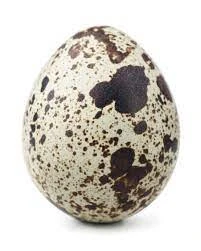
Quail eggs, while small in size, pack a significant nutritional punch and are considered a delicacy in many countries around the world. Their light, delicate taste, similar to that of chicken eggs, combined with their unique nutritional profile, make them a sought-after ingredient in both gourmet cooking and baking. Despite their small size, quail eggs are rich in essential nutrients like vitamins and minerals, closely mirroring the nutritional contents of chicken eggs. They are particularly high in protein and vitamin B12, contributing to overall health and wellbeing. Their distinctive spotted shell also adds a visual appeal to dishes, making them a popular choice for chefs and food enthusiasts alike. Whether used in a fancy appetizer, a rich dessert, or simply boiled as a snack, quail eggs bring a touch of elegance and a host of nutritional benefits to the table.
Pheasant Eggs
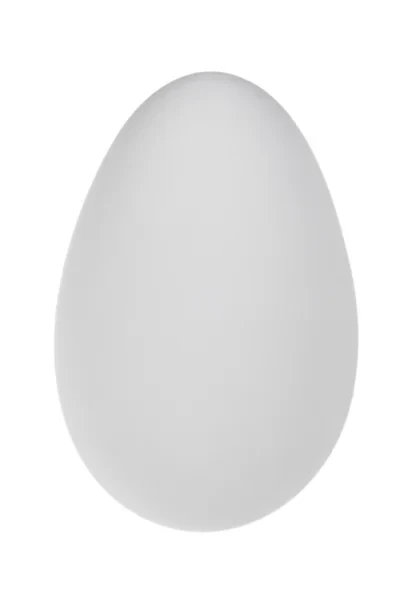
Pheasant eggs, while not as commonly used as other types of eggs, offer a unique flavor and nutritional profile that can enhance a variety of dishes. They have a less rich taste compared to quail eggs, but carry a distinctive gamey flavor that can add a unique twist to your culinary creations. Despite their smaller size, pheasant eggs are packed with nutrients, providing a good source of protein, vitamins, and minerals. Their size also makes them ideal for individual servings, allowing for portion control and adding a touch of elegance to your meals. Furthermore, their beautiful, speckled shell makes them a popular choice for decorative purposes in baking. Whether you're looking to experiment with new flavors or seeking a nutritious alternative to common eggs, pheasant eggs can significantly influence the taste and nutritional value of your dishes, making them a worthy addition to your culinary repertoire.
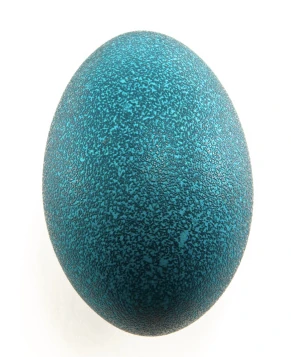
Emu Eggs
Emu eggs, a unique offering from the world of avian species, are renowned for their striking dark black shell adorned with deep green speckles. Weighing in at around two pounds, they are equivalent to about a dozen chicken eggs, making them one of the largest edible bird eggs available. This size, coupled with their unique appearance, makes them a standout in the culinary world, adding a touch of novelty and elegance to any dish they grace.
Ostrich Eggs
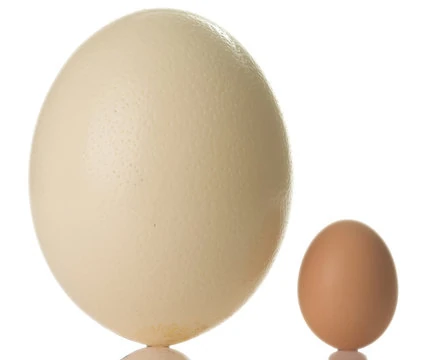
Ostrich eggs are the largest of all bird eggs. They are about 20 times larger than chicken eggs, weigh in around 3 pounds, and contain 2,000 calories. One ostrich egg contains around 100g of fat but the yolk makes up only about 20% of the egg, with the majority being the egg white. This means that while ostrich eggs are high in calories and fat, they are also a rich source of protein. Their shells are thick and difficult to crack, but their size makes them a novelty in the culinary world. Despite their size, ostrich eggs have a similar nutritional profile to chicken eggs, packed with essential nutrients such as protein, fat, vitamins, and minerals.
Moreover, ostrich eggs are a good source of iron, providing more of this essential mineral compared to chicken eggs. They also contain essential vitamins, including vitamin D, which is crucial for bone health and immune function.
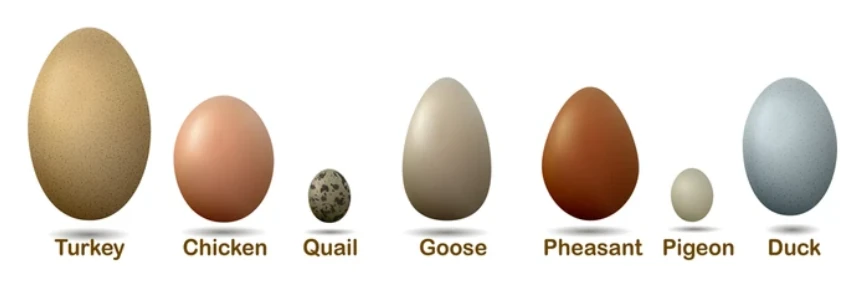
Fortified and Pastured Eggs
Fortified eggs come from hens fed supplements rich in certain nutrients, resulting in eggs with higher levels of these nutrients. For example, hens fed a diet high in omega-3 fatty acids will lay eggs with higher levels of omega-3. Pastured eggs come from hens that are allowed to freely eat plants, insects, worms, and some commercial feed. These eggs are often higher in vitamin A, E, and omega-3 fatty acids, and lower in cholesterol and saturated fat compared to conventionally raised eggs.
The selection of bird eggs for your culinary endeavors hinges on your specific preferences for taste, texture, and volume. Each variety of bird egg introduces a distinct element to your dishes, adding to the rich tapestry of culinary exploration. Whether you're baking a cake or whipping up a gourmet meal, the choice of egg can add a unique twist, making the journey through the culinary landscape an exciting adventure.

The Healthiness of Eggs
Often referred to as nature's multivitamin, eggs are a powerhouse of nutrition, packed with essential proteins, vitamins, and minerals. They are a complete protein food, containing all nine essential amino acids that our bodies cannot produce on their own. But that's not all. Eggs are also a rich source of choline, a nutrient that plays a vital role in brain development and function. But what about the cholesterol and fat content in eggs? Let's crack open the facts.
Contrary to popular belief, the cholesterol in eggs doesn't seem to raise cholesterol levels the way other foods high in trans fats and saturated fats do. In fact, according to the Mayo Clinic, most healthy people can eat up to seven eggs a week without increasing their risk of heart disease. Some studies have even suggested that this level of egg consumption might help prevent certain types of stroke and a serious eye condition called macular degeneration.
However, it's important to note that individuals with diabetes might need to exercise caution. Some research suggests that eating seven eggs a week increases heart disease risk for people with diabetes. More research is needed to understand the link between eggs, diabetes, and heart disease. If you're concerned about the cholesterol content in eggs, consider using only the egg whites, which contain no cholesterol but still offer a good amount of protein. Cholesterol-free egg substitutes, made with egg whites, are also an option.
While the yolk contains cholesterol and fat, it also houses important nutrients like vitamin D and folic acid. Vitamin D is crucial for bone health and immune function, while folic acid plays a key role in the formation of genetic material and proper brain function. So, while eggs do contain cholesterol, they also provide a host of beneficial nutrients.
When it comes to the healthiness of eggs, it's not just about the egg itself, but also the foods that are often consumed with it. As Healthline points out, foods like bacon and sausages that are high in saturated fats and salt are more likely to increase the risk of heart disease and stroke than eggs.
In a nutshell - or an eggshell, eggs are a nutritious food that can be a healthy part of a balanced diet. However, like any food, they should be consumed in moderation. Overconsumption of any food, including eggs, can lead to health problems. So, whether you enjoy your eggs scrambled, boiled, or poached, remember to enjoy them as part of a varied and balanced diet.

Egg Storage and Safety: Ensuring Quality and Preventing Illness
When it comes to eggs, proper storage and handling are crucial not only for maintaining quality but also for preventing foodborne illnesses. Whether you're a seasoned chef or a home cook, understanding the basics of egg storage and safety can significantly enhance your culinary experience.
Buying and Storing Eggs
When purchasing eggs, ensure they are sold from a refrigerator or refrigerated case. Open the carton to check that the eggs are clean and the shells are not cracked. Cracked eggs can allow pathogens to come into contact with the egg white or yolk, posing a risk of contamination.
Once home, store eggs in their original carton in the main body of the refrigerator, not on the door. The temperature fluctuations on the door can affect the quality of the eggs. The carton protects the eggs from absorbing strong odors and flavors of other foods in the fridge, and it also helps maintain freshness.
Egg Storage Times
Eggs should be used within three weeks for the best quality. However, they can still be consumed after the sell-by date if they look and smell normal. Hard-cooked eggs, whether in the shell or peeled, should be used within one week after cooking.
Preparing and Serving Eggs
When preparing eggs, cook them until both the yolk and the white are firm. Scrambled eggs should not be runny. Casseroles and other dishes containing eggs should be cooked to 160° F. Use a food thermometer to ensure the correct temperature.
When serving, keep hot egg dishes hot and cold egg dishes cold. Egg dishes should be refrigerated until time to serve. If they are going to stay out longer than two hours, keep cold egg dishes on ice.
Egg Safety in Different Conditions
Humidity and altitude can affect the quality of eggs. If the environment is very humid, the candy will absorb moisture from the air, remaining gooey. This can be circumvented by heating the molten sugar to a higher temperature. Also, like many other confections and baked goods, eggs need to have their recipe altered for high-altitude areas.
Proper egg handling and storage are key to maintaining egg quality and preventing foodborne illnesses. By following these guidelines, you can ensure that your eggs are safe, delicious, and ready for your next culinary adventure.

Recipes with Eggs
Eggs are a versatile and nutritious ingredient that form the backbone of countless dishes across cuisines worldwide. From simple breakfast staples to complex desserts, eggs add richness, structure, and flavor to a wide variety of recipes. Check out some of Granny's favorites:
-
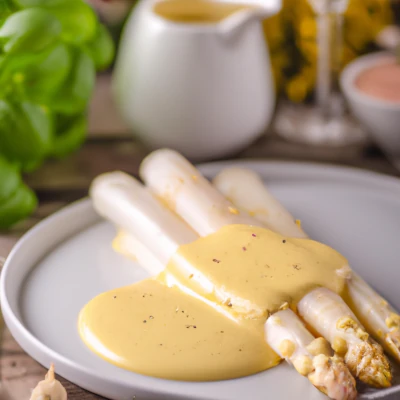
Hollandaise Sauce
Experience the rich, buttery delight of Granny's Hollandaise Sauce. This classic French sauce adds a touch of elegance to any dish, from eggs Benedict to asparagus.
-

Coconut Cream Pie
Experience the tropical delight of our Coconut Cream Pie. This recipe combines the sweetness of coconut with a creamy custard filling, all encased in a flaky pie crust.
-
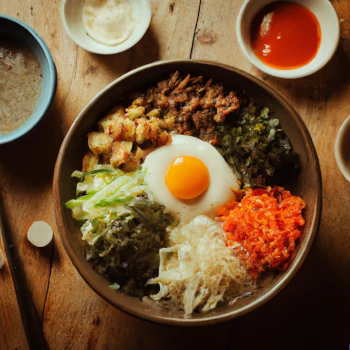
Bibimbap
A delightful Korean rice dish topped with an assortment of seasoned vegetables, gochujang (spicy Korean chili paste), and your choice of protein such as beef, chicken, or tofu. It's a harmonious blend of flavors and textures.